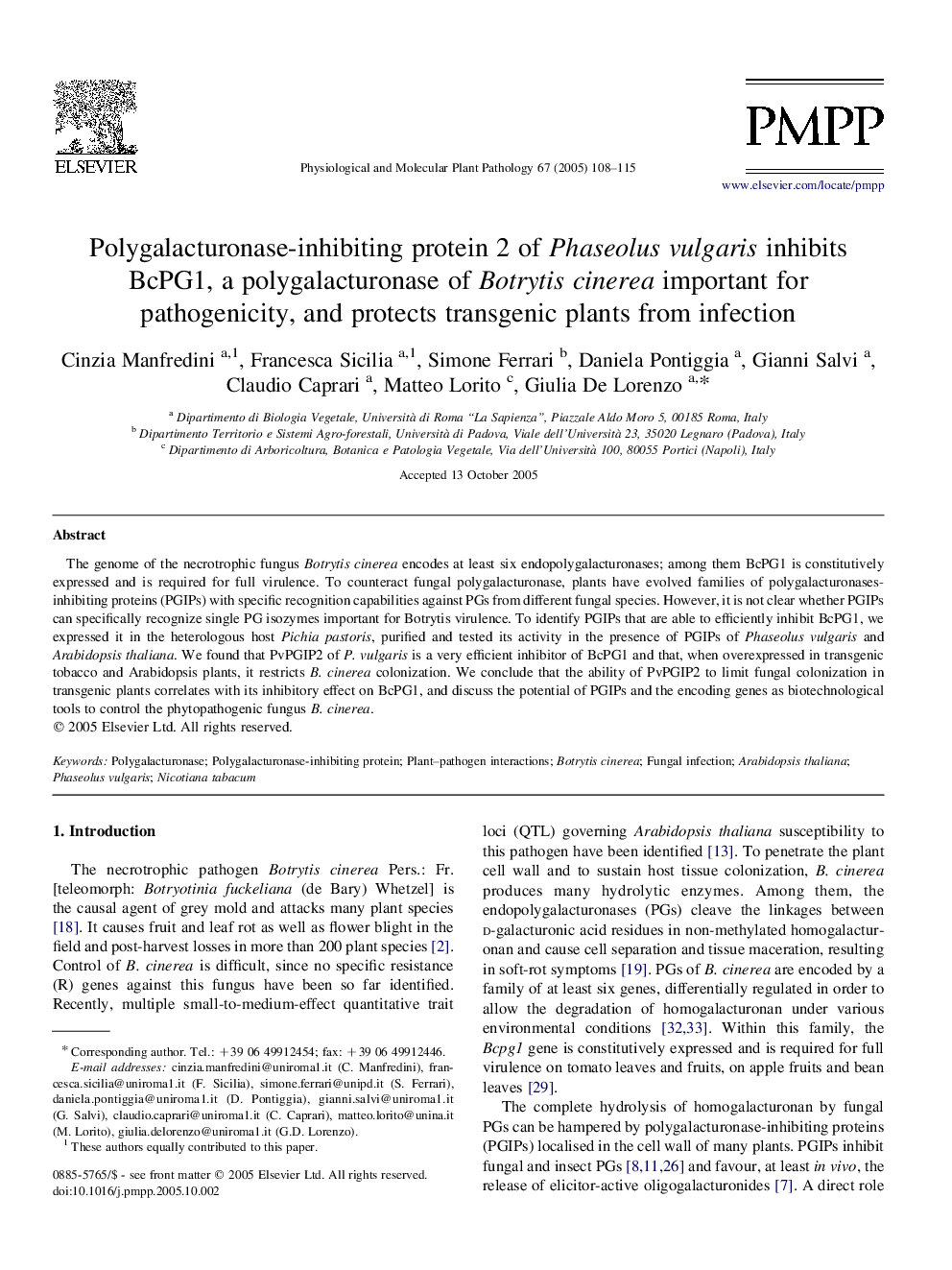| Article ID | Journal | Published Year | Pages | File Type |
|---|---|---|---|---|
| 9144628 | Physiological and Molecular Plant Pathology | 2005 | 8 Pages |
Abstract
The genome of the necrotrophic fungus Botrytis cinerea encodes at least six endopolygalacturonases; among them BcPG1 is constitutively expressed and is required for full virulence. To counteract fungal polygalacturonase, plants have evolved families of polygalacturonases-inhibiting proteins (PGIPs) with specific recognition capabilities against PGs from different fungal species. However, it is not clear whether PGIPs can specifically recognize single PG isozymes important for Botrytis virulence. To identify PGIPs that are able to efficiently inhibit BcPG1, we expressed it in the heterologous host Pichia pastoris, purified and tested its activity in the presence of PGIPs of Phaseolus vulgaris and Arabidopsis thaliana. We found that PvPGIP2 of P. vulgaris is a very efficient inhibitor of BcPG1 and that, when overexpressed in transgenic tobacco and Arabidopsis plants, it restricts B. cinerea colonization. We conclude that the ability of PvPGIP2 to limit fungal colonization in transgenic plants correlates with its inhibitory effect on BcPG1, and discuss the potential of PGIPs and the encoding genes as biotechnological tools to control the phytopathogenic fungus B. cinerea.
Keywords
Related Topics
Life Sciences
Agricultural and Biological Sciences
Plant Science
Authors
Cinzia Manfredini, Francesca Sicilia, Simone Ferrari, Daniela Pontiggia, Gianni Salvi, Claudio Caprari, Matteo Lorito, Giulia De Lorenzo,
